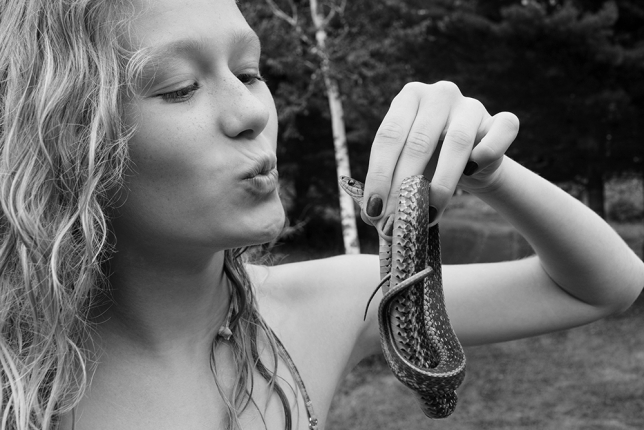Americans’ relationship with nature is complex and nuanced

Americans of all types were similar in their interests in nature and their time spent outside. But clear and substantial differences emerged across and within race and ethnicity, residential location, and age in two particular areas—interest in particular recreational activities, and barriers to those interests. For example, interest in activities like camping and hiking differed dramatically across groups, while interest in activities like visiting nature-education centers was more widely shared. In addition, minorities, younger respondents, and urban residents faced particular barriers. Black children had participated in far fewer nature-oriented trips (such as hiking or fishing) than white children had. Undoubtedly, further differences would become salient when designing and implementing programs in particular neighborhoods and among particular groups. Seeking to understand these nuances requires long-term effort.
Set clear goals and objectives
Members of various sectors should clearly define what exactly they are trying to do, affect, or accomplish, and how they anticipate their efforts will influence that particular outcome. At a basic level, clearly stating what exactly the goal is narrows the target, and the conversations, programs, and policies that lead up to that target. As an example, consider how promoting interest in nature is related to but distinct from promoting time spent outdoors; both of these in turn are distinct from valuing nature in particular ways; each of these three is in turn distinct from participation in fishing or hunting or camping trips.
Question one-size-fits-all and “silver-bullet” diagnoses and prognoses
Avoid unfounded generalizations or presumptions that what works for one group in one place will work for all groups in all places. As our research shows, connection to nature often looks and operates profoundly differently across places and groups. Understanding comes when program providers place themselves in the lives and neighborhoods of the constituencies they seek to serve and by including those we wish to serve in the development of programming. Also recognize that multiple causal pathways can produce the same outcome; therefore, less time should be spent searching for “silver-bullet” solutions that purportedly would have a one-to-one effect on some outcome for all groups.
Be explicit about common assumptions, and consider revising them
Based on our experience, one common assumption in the conservation and environmental communities is that more is inherently better: more time spent outdoors, more visitors to a refuge or park, more memberships to organizations, and so on. But what is the threshold for experiences in nature? What is the minimum required? Is more always better? A second common assumption is that the American public is best viewed as a large number of individuals who change their decisions based on the information presented to them. Yet our study demonstrates the powerful role of inter-generational transmission of knowledge and values from family, teachers, and other influential adults. Our study also illustrates the influential effect of social networks on individuals’ interests. It further begins to suggest the effect of community context on what people do and do not do. A third common assumption is that providing (more) information will change people’s behaviors. Our study questions the effectiveness of merely providing more information, since Americans are already aware and persuaded of nature’s benefits and importance — and since most are already concerned about younger generations’ disconnection from nature.
Use differences across age and stages of life to tailor programs and policies
Our research revealed tremendous variation by age in how Americans value and experience nature. For the children in our study, time spent outdoors shrank as time spent on electronic media and organized sports rose with age. Younger adults, on average, reported spending more time outside in nature than older adults did. Adults in their 30s were the most interested in fishing and hunting; interest in hiking declined steeply among older adults. Older adults were relatively more comfortable being in nature by themselves and more likely to link their spiritual or religious feelings together with nature. Further differences emerged in satisfaction with time spent outdoors, perceptions of financial resources to devote to nature interests, personal influences on thoughts and feelings about nature, the presence or absence of competing issues in life, time devoted to sharing interests in nature with children, attitudes toward using natural resources, and so on. Despite these differences, age does not often emerge as a salient factor affecting programs, policies, and campaigns related to nature. It should.
Clearly state, trace, test, and analyze causal pathways
We urge members of the conservation and environmental communities in particular to be as explicit in their social analysis as they are in their ecological analysis. We are particularly concerned about unverified explanations for particular outcomes, such as support for nature-related programming. We found that feelings of affection toward wildlife were indeed related to this support — but we also found that adults with strong values of control toward and exploitation of nature supported the same programs. These two findings almost certainly indicate different causal pathways at work that, nonetheless, produce the same outcome. Designing a communications strategy around only affection for nature would therefore overlook a swathe of potential supporters. Furthermore, beyond merely observing that one action tends to produce a certain outcome, we urge careful attention to why and how one factor affects another via the identification of generalizable processes and mechanisms. What exactly was it that drew neighborhood residents to visit a particular wildlife refuge on multiple occasions? Why was a certain media campaign so popular? How were so many different stakeholders able to work together to conserve a particular species? Under which settings is a particular program or policy most effective? Such questions demand robust, nuanced social science research. This study, we hope, provides an example of this type of research and also fertile ground for additional work.
